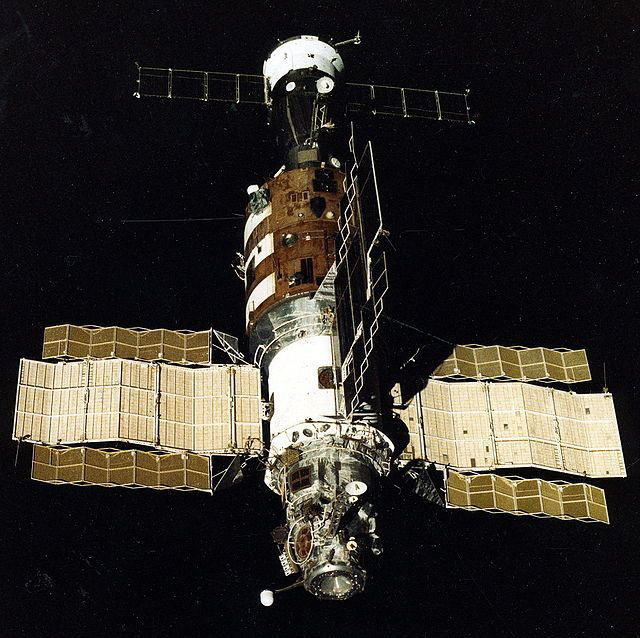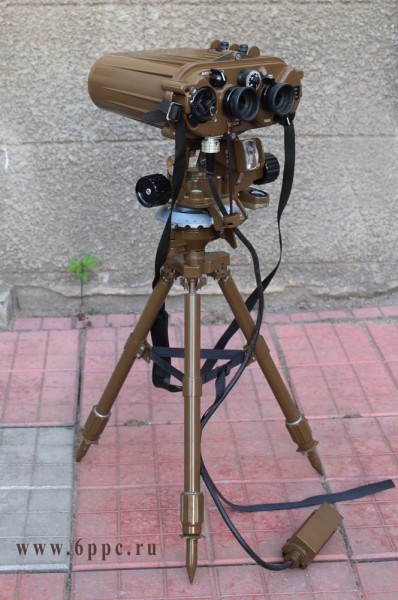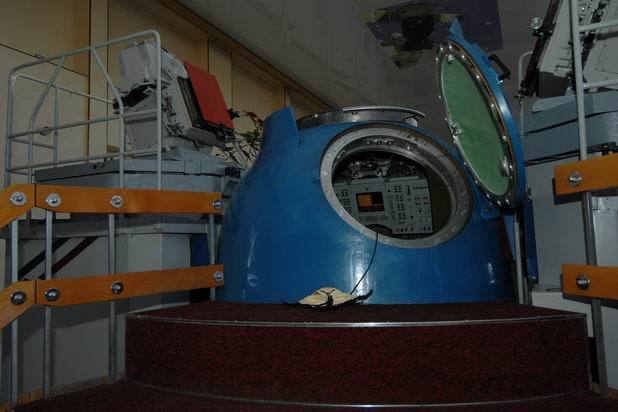How did you actually get close to the Salyut-7 station?
A week ago, talking about special forces and military equipment in astronautics, I mentioned the story of a tank rangefinder, which was used to get close to the Salyut-7 emergency station. But as it turned out, this is a myth. The direct participant of those events contacted me and told me what kind of equipment was used for that historic flight.

"Salyut-7" immediately after the repair, photo of the crew of the Soyuz T-13 / Roskosmos
Talking about the history of astronautics, often have to rely on some sources that may not be consistent, and even contradict each other. We have to evaluate their authenticity, and in the worst case, write about the conflict of information - “this source writes like this, this one - on the contrary”. Why did I make a mistake and relay the myth? First, for quite a long time the story of the tank sight lay in my memory in the “tales” section marked “according to several good sources”, did not contradict the well-known facts about the ship “Soyuz” and had no sources saying the opposite. It is clear that the memory cannot be trusted absolutely, and when I was preparing the material, I looked for references confirming the history. And this was found - in the article “Military Application of Laser Technologies,” a candidate of military sciences working at FSUE “Rosoboronexport” told this story and even called the exact model of a range finder. By name easily was a photo and technical parameters. To be honest, I was a little surprised by the mass of 66 kg, but the Soyuz was flying with two astronauts, not three, and theoretically it was possible to find a place even for a large and heavy sight.
A week later, Anatoly Nikolaevich Kostin wrote to me, who from 1978 to 1987 worked at RSC Energia, took direct part in those events and told about this most interesting story in the pages of Ergonomist magazine in 2013.
')
As is known, due to the error of the ground-based TsUPa, the Salyut-7 station was de-energized. The standard equipment of the automatic docking required electricity for work, and it was necessary to think of something, so that the rescue expedition could get close and dock in manual mode. The problem is that ballistics could bring the ship to a distance of several kilometers from the station, and the standard manual approach system worked at distances of several hundred meters. It was necessary to look for some way for the first time in the domestic cosmonautics to manually go through this stage.
The standard manual approach and docking system for the Soyuz spacecraft is the Vizir Special Cosmonaut (VSK). This is, in fact, a periscope located under the feet of the astronauts.

Scheme of the Soyuz spacecraft, illustration of RSC Energia

The ship "Soyuz" in flight, clearly visible green periscope VSK. NASA photo, thegreenj / Wikimedia processing
The VSK periscope is looking forward, it cannot turn, and at a distance of several kilometers the station is visible as a bright point that cannot help. But shortly before the incident with the station, the military had a laser rangefinder LPR-1, which was light, compact and measured the distance in the right range.

LPR-1, photo 6ppc.ru
The next problem - the range finder could not work through the VSK. But the solution was found here. There are two portholes on the descent vehicle of the Soyuz - to the left and to the right of the astronauts. So you can turn the ship sideways and measure the distance through one of them. At the right window set a rangefinder, another viewfinder and duplicate knobs control the ship. The commander of the ship in the area of long-range rendezvous was supposed to work with duplicate handles, and, having come close to about 50 meters, to change seats, switch control knobs to regular ones and dock.
The next task was to check the performance of the idea and work out recommendations to the astronauts. But the simulators of that time used televisions, which were useless to watch with binoculars. Only at Baikonur stood the newly created Don-Soyuz simulator with a collimator optical system with which binoculars could be used. The cosmonaut training center immediately formed a working group that included military cosmonauts Yuri Malyshev and Anatoly Berezovoy, and from RSC Energia a young engineer, Anatoly Kostin and Sergei Krikalev, randomly selected young engineers went on a business trip (yes, the same cosmonaut later worked then in RKKE in the onboard instructions department).

Simulator "Don-Soyuz", photo CPK them. Yu.A. Gagarin
First, a military astronaut sat down at the simulator, but it quickly became clear that a flight engineer was needed to perform the calculations. Civil engineers were added to the “crews”, and by the end of the first day it turned out that this approach was in principle possible. Of course, it took a lot more work, detailed instructions and special graphic templates were created, but all these works paid off a lot, when already in space "Soyuz T-13" with cosmonauts Vladimir Dzhanibekov and Viktor Savinykh without problems got close to "Salyut-7" and docked. And Kostin with Krikalev kept a thank-you telephonogram.

Telephone scan, author A.N. Kostin, Ergonomist magazine, No. 27, February 2013
So, in fact, on the Soyuz T-13, it was not the tank sight of the TPD-K1 with the T-72 that was installed, but the military rangefinder of the LPR-1. The article by Anatoly Kostin even shows a photograph of a modified simulator, where you can see the rangefinder eyepieces.

magazine "Ergonomist", №27, February 2013
What is curious, the search for various references to this story gives a contradictory picture. Somewhere the laser rangefinder is simply mentioned, somewhere they write that the rangefinder was done on purpose, which is also wrong, somewhere they mix the information into a pile and write “tank range finder LPR-1”, which is also not true. The LPR-1 stands for Laser Intelligence Device and is mainly used by scouts and artillery spotters. Produced and used, by the way, until now.
In the comments to the publication surfaced another version that the astronauts used the usual traffic police radars. Theoretically, this could be useful for measuring the rate of convergence. However, Anatoly Kostin recalls that these radars were checked, but could not work through the porthole of the ship, and they were not taken into flight.
In the salvage mission "Salyut-7", at least, a different technique was used, but also having initially military purpose. And it is wonderful that this story has now lost its myths.
Additional information about Anatoly Nikolaevich Kostin.
Reprint of the article of the journal "Ergonomist" on the website UsabilityLab, whose supervisor is Anatoly Nikolaevich.
A series of publications "Military Space"

"Salyut-7" immediately after the repair, photo of the crew of the Soyuz T-13 / Roskosmos
About working with sources
Talking about the history of astronautics, often have to rely on some sources that may not be consistent, and even contradict each other. We have to evaluate their authenticity, and in the worst case, write about the conflict of information - “this source writes like this, this one - on the contrary”. Why did I make a mistake and relay the myth? First, for quite a long time the story of the tank sight lay in my memory in the “tales” section marked “according to several good sources”, did not contradict the well-known facts about the ship “Soyuz” and had no sources saying the opposite. It is clear that the memory cannot be trusted absolutely, and when I was preparing the material, I looked for references confirming the history. And this was found - in the article “Military Application of Laser Technologies,” a candidate of military sciences working at FSUE “Rosoboronexport” told this story and even called the exact model of a range finder. By name easily was a photo and technical parameters. To be honest, I was a little surprised by the mass of 66 kg, but the Soyuz was flying with two astronauts, not three, and theoretically it was possible to find a place even for a large and heavy sight.
A week later, Anatoly Nikolaevich Kostin wrote to me, who from 1978 to 1987 worked at RSC Energia, took direct part in those events and told about this most interesting story in the pages of Ergonomist magazine in 2013.
')
Equipment and resourcefulness
As is known, due to the error of the ground-based TsUPa, the Salyut-7 station was de-energized. The standard equipment of the automatic docking required electricity for work, and it was necessary to think of something, so that the rescue expedition could get close and dock in manual mode. The problem is that ballistics could bring the ship to a distance of several kilometers from the station, and the standard manual approach system worked at distances of several hundred meters. It was necessary to look for some way for the first time in the domestic cosmonautics to manually go through this stage.
The standard manual approach and docking system for the Soyuz spacecraft is the Vizir Special Cosmonaut (VSK). This is, in fact, a periscope located under the feet of the astronauts.

Scheme of the Soyuz spacecraft, illustration of RSC Energia

The ship "Soyuz" in flight, clearly visible green periscope VSK. NASA photo, thegreenj / Wikimedia processing
The VSK periscope is looking forward, it cannot turn, and at a distance of several kilometers the station is visible as a bright point that cannot help. But shortly before the incident with the station, the military had a laser rangefinder LPR-1, which was light, compact and measured the distance in the right range.

LPR-1, photo 6ppc.ru
The next problem - the range finder could not work through the VSK. But the solution was found here. There are two portholes on the descent vehicle of the Soyuz - to the left and to the right of the astronauts. So you can turn the ship sideways and measure the distance through one of them. At the right window set a rangefinder, another viewfinder and duplicate knobs control the ship. The commander of the ship in the area of long-range rendezvous was supposed to work with duplicate handles, and, having come close to about 50 meters, to change seats, switch control knobs to regular ones and dock.
The next task was to check the performance of the idea and work out recommendations to the astronauts. But the simulators of that time used televisions, which were useless to watch with binoculars. Only at Baikonur stood the newly created Don-Soyuz simulator with a collimator optical system with which binoculars could be used. The cosmonaut training center immediately formed a working group that included military cosmonauts Yuri Malyshev and Anatoly Berezovoy, and from RSC Energia a young engineer, Anatoly Kostin and Sergei Krikalev, randomly selected young engineers went on a business trip (yes, the same cosmonaut later worked then in RKKE in the onboard instructions department).

Simulator "Don-Soyuz", photo CPK them. Yu.A. Gagarin
First, a military astronaut sat down at the simulator, but it quickly became clear that a flight engineer was needed to perform the calculations. Civil engineers were added to the “crews”, and by the end of the first day it turned out that this approach was in principle possible. Of course, it took a lot more work, detailed instructions and special graphic templates were created, but all these works paid off a lot, when already in space "Soyuz T-13" with cosmonauts Vladimir Dzhanibekov and Viktor Savinykh without problems got close to "Salyut-7" and docked. And Kostin with Krikalev kept a thank-you telephonogram.

Telephone scan, author A.N. Kostin, Ergonomist magazine, No. 27, February 2013
Myths, Myths
So, in fact, on the Soyuz T-13, it was not the tank sight of the TPD-K1 with the T-72 that was installed, but the military rangefinder of the LPR-1. The article by Anatoly Kostin even shows a photograph of a modified simulator, where you can see the rangefinder eyepieces.

magazine "Ergonomist", №27, February 2013
What is curious, the search for various references to this story gives a contradictory picture. Somewhere the laser rangefinder is simply mentioned, somewhere they write that the rangefinder was done on purpose, which is also wrong, somewhere they mix the information into a pile and write “tank range finder LPR-1”, which is also not true. The LPR-1 stands for Laser Intelligence Device and is mainly used by scouts and artillery spotters. Produced and used, by the way, until now.
In the comments to the publication surfaced another version that the astronauts used the usual traffic police radars. Theoretically, this could be useful for measuring the rate of convergence. However, Anatoly Kostin recalls that these radars were checked, but could not work through the porthole of the ship, and they were not taken into flight.
Conclusion
In the salvage mission "Salyut-7", at least, a different technique was used, but also having initially military purpose. And it is wonderful that this story has now lost its myths.
Additional information about Anatoly Nikolaevich Kostin.
Reprint of the article of the journal "Ergonomist" on the website UsabilityLab, whose supervisor is Anatoly Nikolaevich.
A series of publications "Military Space"
Source: https://habr.com/ru/post/401989/
All Articles